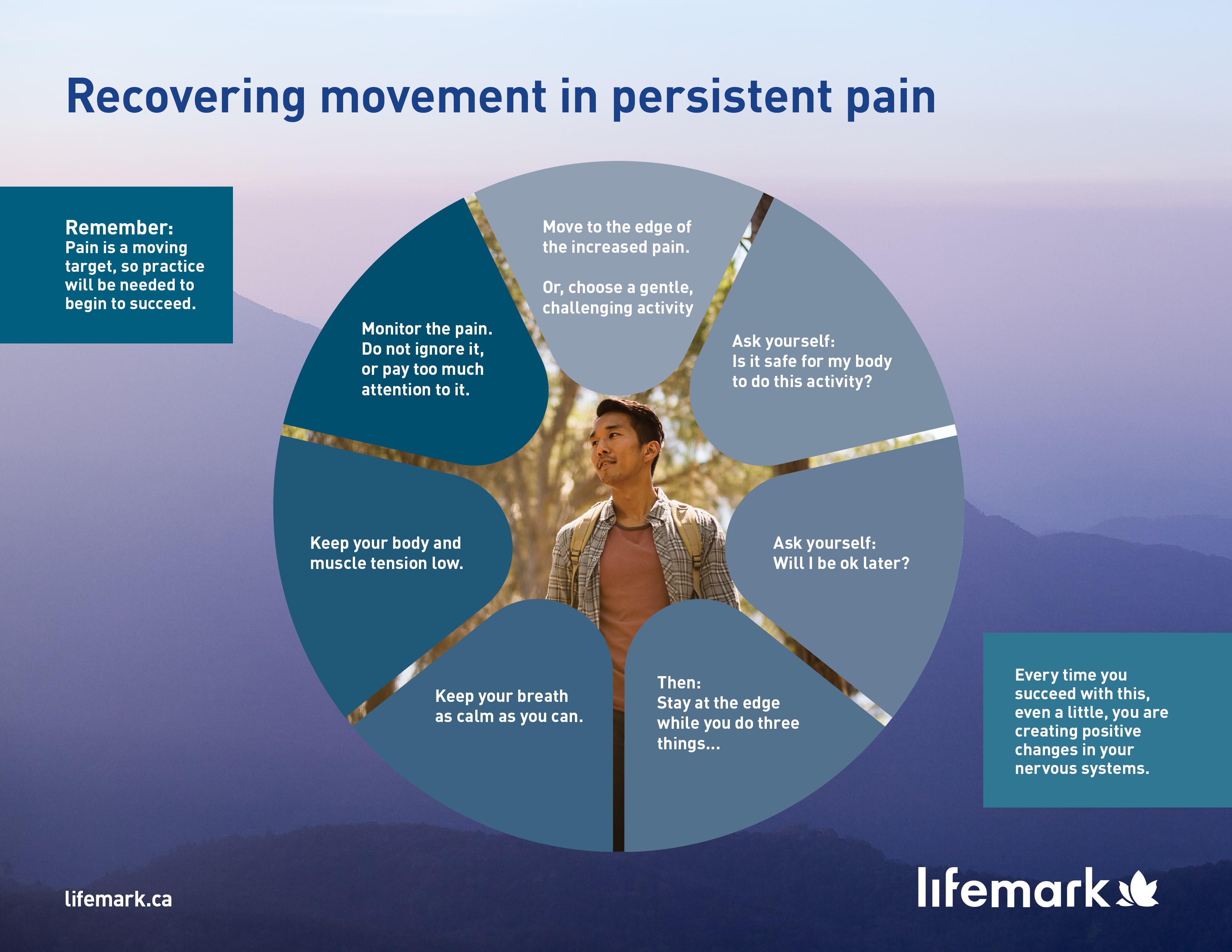Step 4: Calm Movement Challenge

Now that you’re more comfortable with breath regulation and body awareness, it’s time to add movement.
Have a look at the PDF file below, which is titled “Recovering Movement in Persistent Pain.”
Handout – Recovering Movement in Persistent Pain. Click on this link or the image below to download the PDF file.
Read through the written instructions provided in the document to understand the movement guidelines better. Your goal is to move with more ease.
Choose an activity that you believe is safe for your body and won’t leave you feeling worse. Start with something small, a movement or an activity you can pause or stop whenever you feel the need.
Before you begin moving, take long, smooth, soft breaths for 2 to 5 minutes. Slow down your breath, then smooth out the sound of your breath and the movement of your ribs and belly while you breathe.
Next, take 2 to 5 minutes to feel the subtle, non-pain sensations of your body before you start moving.
When you feel ready, start moving. Do your best to keep your breath and your body calm while you move.
Divide your attention between your breath, your body and your movement. Continue the activity for as long as you feel safe while keeping your attention divided and maintaining calmness in your breath and body.
When your breath gets tight or shallow, when your muscles start to grip or when you start to feel less safe, try one last time to bring softness and calmness to your body, mind and breath before you decide whether or not it’s time to stop.
Progress slowly and carefully. When you push a little too hard, practice calmness in your body, breath and mind and remember that you are working on integrating your pain management skills in your daily life. Every time you succeed at moving with more ease, you are creating positive changes in your nervous systems and body.
When you’re ready, click the Next Section button below to move to Step 5.

